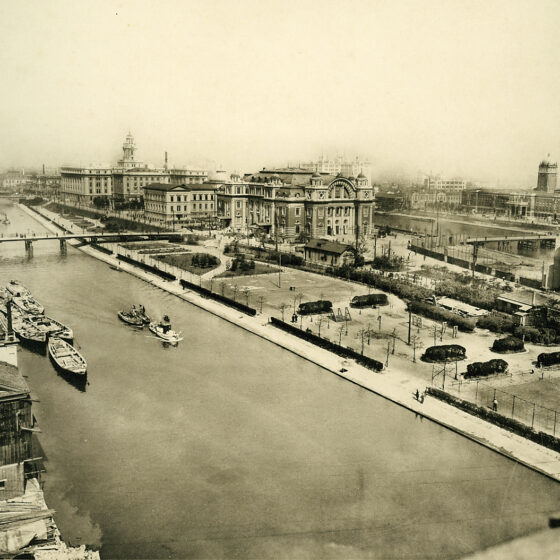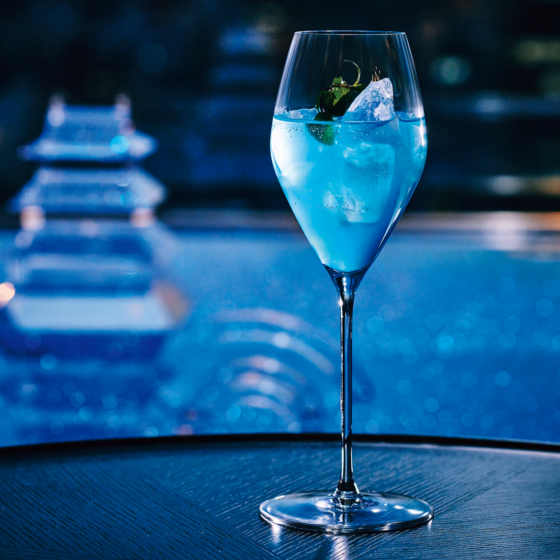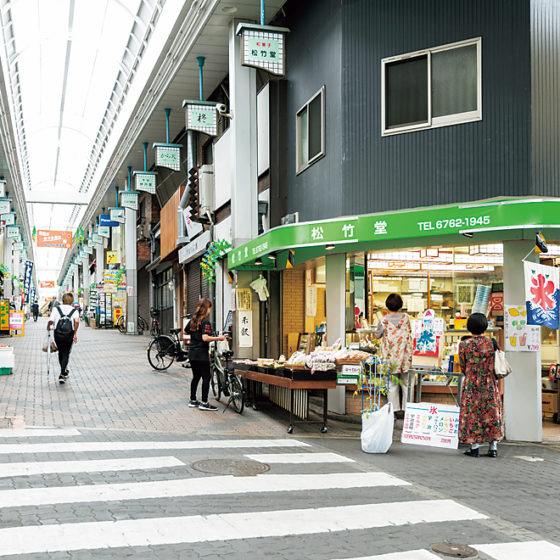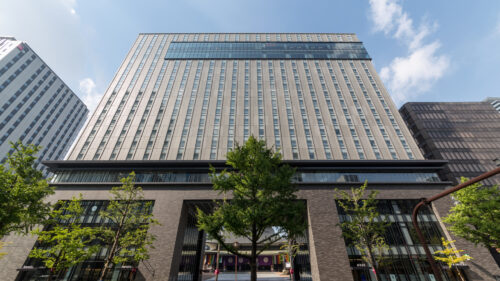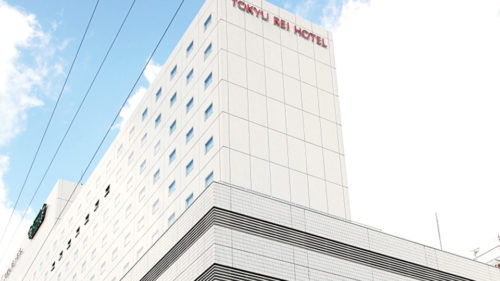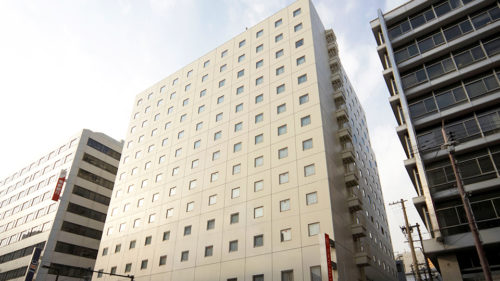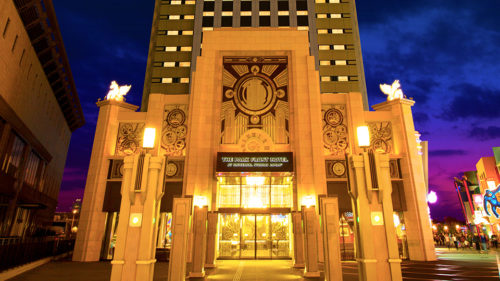- After passing by the Bank of Japan Osaka Branch and stepping into the western side of Nakanoshima, you will see a sudden change in the landscape and many tall office buildings appear. Like the districts in front of Osaka Station and along Midosuji St., Nakanoshima is also one of those which were considered suitable for the development of skyscraper zones in the heart of the city. During the period of high economic growth, several high-rise buildings were built surrounding Asahi Shimbun Group’s ones standing on both sides of Yotsubashisuji St. Because building height restrictions were eased as exceptions, it became possible to construct these buildings which represented this period. After 50 years, starting from the beginning of the 21st century, those buildings have been reconstructed one by one. Today, many skyscrapers over 100 m line up from the northern end to the southern end of Nakanoshima and form the highest skyline of Osaka. We would like to suggest not only looking at the design of each building but also enjoying their night view that beautifully shines a glaring light on the surfaces of rivers.
- Daibiru Main Building (2013) was built as a skyscraper in a way to bring new life to the old Osaka Building aka Daibiru, which was an architectural masterpiece designed by Setsu Watanabe in 1925 and constructed based on drawings made by Togo Murano. The area starting from Daibiru is a culture and art zone. At the center of it, Nakanoshima Museum of Art, Osaka (NAKKA) opened in 2022, which looks like an iconic, floating black cubic. Surrounding this building, The National Museum of Art, Osaka (NMAO) (2004) and Osaka Science Museum (1989) stand side by side. In contrast with the outstanding building of NAKKA, almost all of NMAO’s one is buried underground. The Osaka Science Museum houses a planetarium, too. This area actually has a long history related to the art. Jiro Yoshihara, who led a vanguard art movement ‘Gutai (concreteness)’ in postwar Japan opened a gallery named ‘Gutai Pinacotheca’ after renovating old warehouse buildings in 1962. The movement has recently attracted attentions both nationally and internationally. Thus, it was only natural from the viewpoints of history and location that NAKKA and NMAO collaborated to hold a large-scale exhibition focused on ‘Gutai’ last year. If you walk back a little to Yotsubashisuji St., you can also visit Nakanoshima Kosetsu Museum of Art in Nakanoshima Festival Tower West (2017), which exhibits precious private collections of Ryohei Murayama, the founder of The Asahi Shimbun newspaper.
- When you reach the area around Naniwasuji St., you will notice that the width of Nakanoshima has become much larger. This is an area where many development projects are expected to proceed all at once in the upcoming years because a new underground station called Nakanoshima is planned to open on Naniwasuji Line railway in 2031, which connects Osaka Station, Namba Station, and Kansai International Airport. Since accesses to good old hotels constructed in Showa era such as Osaka Grand Hotel and RIHGA Royal Hotel Osaka (1965-) as well as to Osaka International Convention Center (2000) will be improved, the new station is expected to become the central hub of the western area of Nakanoshima where people from across the world gather. The Convention Center is a late-life masterpiece designed by Kisho Kurokawa, a famous architect. In addition, Osaka City government has encouraged businesses to build commercial facilities in areas along rivers as a part of its program aiming at attracting many visitors and customers to the waterfront. Nakanoshima Banks (2010) is the first of those facilities and houses restaurants, bar, shops, and an outdoor brand shop. Couples can celebrate their wedding on the river at one of the restaurants. This facility is built along a promenade by a boarding point for cruise boats and located just in front of the RIHGA Royal Hotel Osaka, which sits along Dojimagawa river. Today, landscapes of many shops and restaurants which offer desirable lifestyles of waterfront living have become a part of everyday life in Nakanoshima.
- Now, we are approaching the goal of the walk through Nakanoshima. The area at the western end of Nakanoshima has an atmosphere of a harbor. A harbor was opened at the mouth of Ajigawa river at a downstream of Nakanoshima after the Meiji Restoration of Imperial Power, and a foreign settlement was established at Kawaguchi. In 1931, a large-scale central wholesale market opened on the right bank of Ajigawa, which continues to fill Osaka people’s stomachs up until now. Although the harbor stopped functioning many years ago, old and huge warehouse buildings constructed before WWII still remain there and tell their history to visitors. And now, as the Expo 2025 Osaka, Kansai is coming closer, this area started attracting attention all of sudden. There is a plan to improve Nakanoshima GATE terminal on the left bank of Ajigawa in order to connect Yumeshima, which is the EXPO site in Osaka Bay and the city center by boat. Yes, rivers are great not only for sightseeing, but also for practical purposes. Various boats varied in size from small to large are cruising around Nakanoshima. Of course, it is fun to walk on the ground but you can find different faces of this district when watching it from a boat. It is particularly notable that Nakanoshima boasts many historic old bridges constructed before WWII such as Tenjinbashi (1934), Naniwabashi (1915), Yodoyabashi, and Oebashi bridges (both in 1935). Please sail under those magnificent bridges in the night when they are beautifully lit up. It feels as if you were sliding through the time and is a unique experience you can never have outside Osaka.
- Nakanoshima looks very different depending on the time of the day, your location, and season. So, what kind of ‘Suito’ would you like to see?
ENGLISH CONTENTS
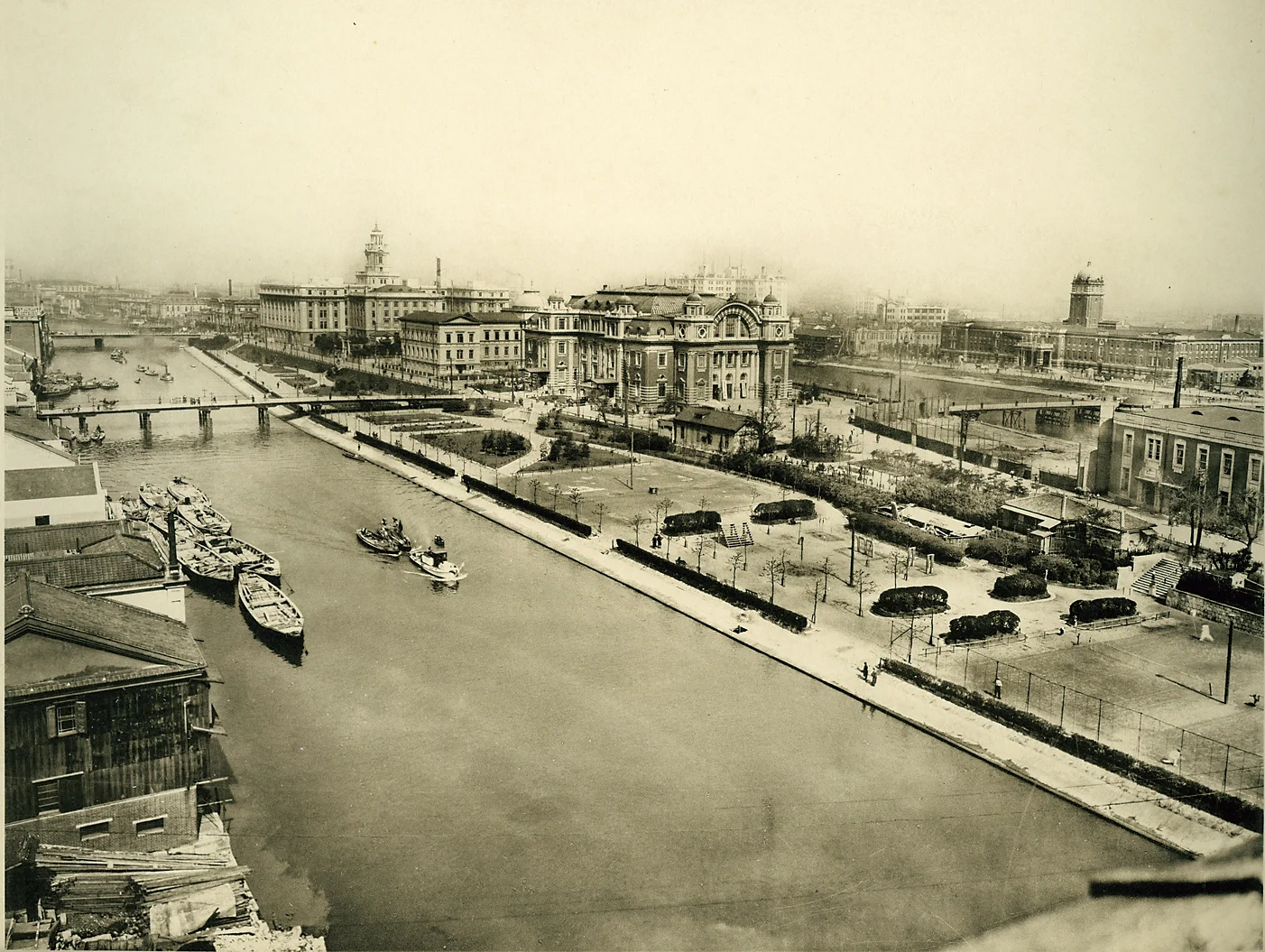
2023.06.16
ENGLISH CONTENTS
Aquapolis Nakanoshima②
- TEXT
- Shinichi Takaoka
- Share
-
STAY
-
OSAKA EXCEL HOTEL TOKYU
-
〒541-00564-1-15, Kyutaromachi, Chuo-ku, OsakaTEL.+81-6-6252-0109FAX.+81-6-6252-3109
-
SHIN-OSAKA ESAKA TOKYU REI HOTEL
-
〒564-00519-6, Toyotsu-cho, Suita-shi, OsakaTEL.+81-6-6338-0109FAX.+81-6-6338-8010
-
OSAKA TOKYU REI HOTEL
-
〒530-00272-1, Doyama-cho, Kita-ku, Osaka-shi, OsakaTEL.+81-6-6315-0109FAX.+81-6-6315-6019
-
THE PARK FRONT HOTEL AT UNIVERSAL STUDIOS JAPAN ™
-
〒554-00246-2-52 Shimaya, Konohana-ku, Osaka-shi, OsakaTEL.+81-6-6460-0109FAX.+81-6-6460-0113



